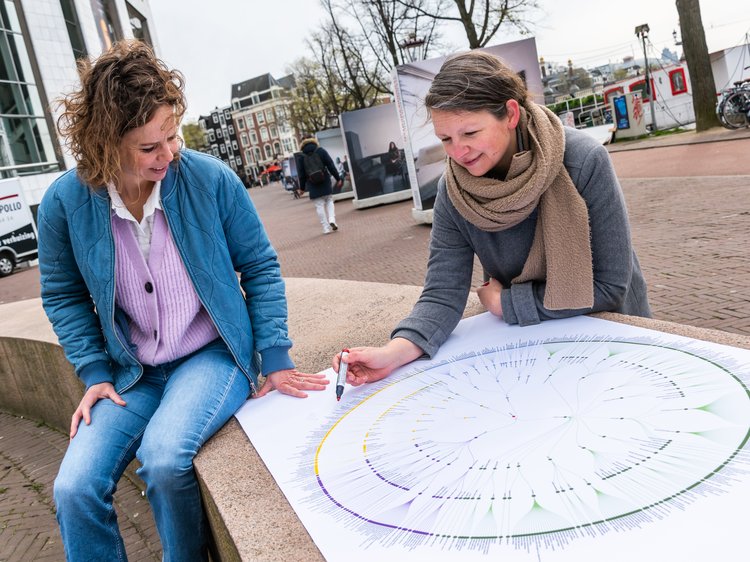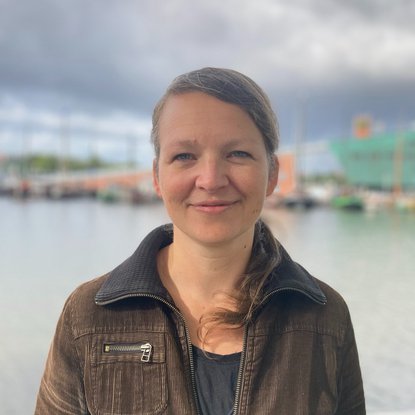The AMS project Ideal(s) City uses complex data to bring the goals into focus and monitor the outcomes. One day, it might result in an automated “solutions machine”.
Managing a city like Amsterdam is a constant balancing of interests. Potential solutions to a traffic problem quickly conflict with air quality requirements and sustainability ambitions. And the housing shortage cannot be solved simply by building expensive apartment complexes. After all, the pursuit of an inclusive city and equity of opportunity requires that teachers and police officers also be able to have homes in the capital.
Many of the major challenges facing the city are intertwined. Yet in daily practice, they are often tackled 'problem by problem' and one ideal is lost at the expense of the other. They believe this must and can be done differently at Ideal(s) City. In this project, AMS Institute is working together with Wageningen University and the City of Amsterdam to provide insight into these interrelationships. They are using numerous data sources to support the choices that must lead to the realization of the ideals that live in the city. For example, hundreds of indicators can be distilled from statistical data. "If you add them up, you arrive at certain scores," explains researcher Lieke Dreijerink. "That makes it possible to express numerically how much impact a project has on the ideals the city wants to realize. It provides the tools to make considered choices."
Numbers play an important role in the Ideal(n) City. For example, the multi-year project identified 40 monitors for analyzing policies and 550 indicators that correspond to certain ideals. The project also managed to identify the most important ideals living in Amsterdam. There are seven of them.

Ideals Monitor
Coalition Agreements
The big question beforehand was what a "heavenly city on earth" actually looks like. What ideals guide the development of Amsterdam? It differs for each person you ask, Dreijerink observes. "But they are the beckoning perspectives that we need to achieve change. So we started asking people."
It was not virgin territory for her, because as an environmental psychologist, she previously researched people's personal values in their pursuit of sustainable behavior. She started the Ideal(s) City project with a number of expert sessions and workshops for officials charged with developing urban strategies. In addition, she made an analysis of coalition agreements of the past nine municipal administrations that have ruled the capital over the past thirty years. What spearheads did they formulate in their programs and what images did they paint of the ideal city they envisioned?
A quick glance through the programs shows that especially the decoration changed considerably. The dry "letter" to the city council changed into a slick brochure, which also has to convince residents. But the main line is fairly constant: Amsterdam was, is and will remain a progressive city. In terms of content, it is striking that employment is a less prominent topic than it was thirty years ago, while 'sustainability' has actually gained a lot of weight.
That was not the main 'higher goal' that emerged from the workshops and text analysis. Most of the seven ideals lie on the social side. First and foremost, Amsterdam wants to be a collective city: its inhabitants make and improve it together. By extension, everyone deserves the same opportunities to develop. Furthermore, Amsterdam wants to be a city of freedom, open to all types of people. Moreover, the city should not only offer safety and health to its inhabitants, but also space for creativity and entrepreneurship.
Sustainability does not dangle at the bottom of the ideals race. Living within our "planetary boundaries," as Swedish earth scientist Johan Rockström put it in 2009, fits Amsterdam. Rockström established the limits within which humanity must operate to continue making sustainable use of the earth's resources. These include global warming, loss of biodiversity, closing the nitrogen and phosphorus cycles, hole in the ozone layer, ocean acidification, water scarcity, land use, chemical pollution and the concentration of harmful compounds in the atmosphere. "Amsterdam strives to operate within those planetary boundaries," Dreijerink notes, based on the administration programs.
Separate monitoring
Sounds good, but it's all about living up to those lofty goals. Pollution, discrimination, unattainably high housing prices and inequality are part of the daily reality. Even in Amsterdam. So to what extent does the city actually live up to the beautiful ideals it sets for itself? One can only determine it accurately by measuring and monitoring. Since an awful lot is already being measured in the city of Amsterdam, the researchers did not have to build the data collection from scratch.
For example, once every two years, the municipal Research and Statistics (O&S) Department publishes the report "The State of the City. This report contains detailed information on employment and educational opportunities, as well as issues such as the housing market, economy, mobility, sustainability, health and livability. The Circularity Monitor is another existing tool that is very useful for the Ideal(s) City project. This monitor records which raw materials enter and leave the city and how many end up in recycling – or not.
For an overview of labor market developments, economic growth and commuter flows in the region, you have to go to the Economic Explorations Metropolitan Region Amsterdam. While for the large bulk of data on citizens one can turn to the Central Bureau of Statistics (CBS).
There were so many useful monitors of data that mapping them required a separate study. The counter eventually stopped at forty monitors.
Not only were the established data providers included, but also new ones, such as the Amsterdam Donut Coalition. This is a group of local change agents committed to the ideals of the 'donut economy': the aspiration that the city lives within a ring – a donut – of fair ecological and social boundaries: the 'planetary' boundaries.
550 indicators
So what exactly do you do with the seas of data from the monitors? The best thing would be if they ended up in an algorithm that would distill sophisticated advice to support the officials who design policy for the city. To do that, the project team ploughed through all the data, looking for indicators that fit the various ideals. It yielded as many as 550 different indicators. Each of them fits to one or more of the seven ideals. By adding up the indicators, it is possible to determine how well a plan or design scores. "If you want to know whether your project contributes to the ideal 'together we make the city’, you can count, for example, how many people are actually involved in its implementation," Dreijerink explains. "That way you could subtract by ideal what contribution your plan makes."
Data analysis could also lend a hand in determining how sustainable a project really is. For example, a heat pump contributes little to CO2 reduction if it uses electricity from a coal-fired power plant.
Pipeline
The ideals monitor methodology is still in its infancy, but has now been applied in a first case study. The redevelopment of the Hugo de Vrieslaan/Schagerlaan intersection near Amstel Station provides for a green appearance of this previously stony square, but within the limits set for traffic safety. "You won’t find a large tree in the middle of the square that obstructs vision, but a green median strip," says Dreijerink. "This can contribute to biodiversity and it promotes the water-storage function."
The Ideal(s) City project looked at what the effects on surrounding neighborhoods might be and what data were useful for analysis. The intention is to test the developed methodology on more projects in the city in the near future. This should provide insight into the usefulness of the methodology and possible areas for improvement.
What is actually the final goal of the Ideal(n) City project? Based on the methodology developed, could you build a fully automatic 'solutions machine' for realizing the city's ideals? Dreijerink: "That is a brain teaser, but I think it is possible, if we extend the pipeline of data to our instrument. The only condition is that you have to be able to use not just some, but áll the necessary data. The grander a plan, the more data we need."
